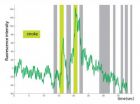(Press-News.org) A new study comparing outcomes among prostate cancer patients treated with surgery versus radiotherapy found differences in urinary, bowel and sexual function after short-term follow-up, but those differences were no longer significant 15 years after initial treatment.
The study, led by first author Matthew Resnick, M.D., instructor in Urologic Surgery, Vanderbilt University Medical Center, was published in the Jan. 31 issue of the New England Journal of Medicine.
From Oct. 1, 1994, through Oct. 31, 1995, investigators enrolled men who had been diagnosed with localized prostate cancer in the Prostate Cancer Outcomes Study (PCOS).
For the current study, investigators followed 1,655 men between the ages of 55 and 74 from the PCOS group, of whom 1,164 (70.3 percent) had undergone prostatectomy, while 491 (29.7 percent) had undergone radiotherapy. At the time of enrollment, the patients were asked to complete a survey about clinical and demographic issues and health-related quality of life. The men were contacted again at set times following treatment and were asked about clinical outcomes and disease-specific quality of life issues.
Men whose prostates had been surgically removed were significantly more likely than those who received radiation therapy to report urinary leakage at two years and five years. However, at 15 years, the investigators found no significant difference in the adjusted odds of urinary incontinence. Nonetheless, patients in the surgery group were more likely to wear incontinence pads throughout the 15-year follow-up period.
Men in the prostatectomy group were also significantly more likely than those in the radiotherapy group to report having problems with erectile dysfunction two years and five years after surgery.
"At the two- and five-year time points, men who underwent prostatectomy were more likely to suffer from urinary incontinence and erectile dysfunction than men who received radiation therapy," explained Resnick. "While treatment-related differences were significant in the early years following treatment, those differences became far less pronounced over time."
Despite early and intermediate-term data revealing treatment-dependent differences in patterns of sexual dysfunction, after five years both groups had a gradual decline in sexual function.
At 15 years, erectile dysfunction was nearly universal with 87 percent in the prostatectomy group and 93.9 percent in the radiotherapy group reporting sexual difficulties.
The authors noted that age may have played a role in the patients' waning sexual function, as shown in unrelated studies.
Some patients also experienced problems with bowel function in the years following treatment. Those who were treated with radiotherapy had more problems in the short term. Men in the radiotherapy group reported significantly higher rates of bowel urgency than those in the prostatectomy group at two years and five years. However, at 15 years, despite absolute differences in the prevalence of bowel urgency between the two groups, the researchers found no significant difference in the odds of bowel urgency. Men who had been treated with radiotherapy were significantly more likely to report being bothered by bowel symptoms at both the two-year and 15-year points.
"This study of 15-year outcomes represents a mature portrait of quality of life issues following prostate cancer treatment," said David Penson, M.D., MPH, Ingram Professor of Cancer Research, professor of Urologic Surgery and Medicine, and director of the Vanderbilt Center for Surgical Quality and Outcomes Research, the senior study author.
"Regardless of the form of initial treatment, patients in this study had significant declines in sexual and urinary function over the duration of the study. The causes of these declines probably include advancing age and additional cancer therapies, in addition to the original therapy," Penson said. "Patients need to be aware that all aggressive therapies for prostate cancer have significant side effects and perhaps these data make an argument for active surveillance (avoiding aggressive treatment and closely following the cancer) in certain cases."
Since the median life expectancy after treatment for prostate cancer is 13.8 years, the authors suggested that these data may be used by physicians to counsel men who are considering treatment for localized disease.
###
Other authors for this study include Tatsuki Koyama, Ph.D., Kang-Hsien Fan, M.S., R. Lawrence Van Horn, Ph.D., Vanderbilt; Peter Albertsen, M.D., University of Connecticut, Farmington; Michael Goodman, M.D., MPH, Emory University, Atlanta; Ann Hamilton, Ph.D., University of Southern California, Los Angeles; Richard Hoffman, M.D., MPH, University of New Mexico and New Mexico VA Healthcare System, Albuquerque; Arnold Potosky, Ph.D., Georgetown University Medical Center, Washington, D.C.; Janet Stanford, Ph.D., Fred Hutchinson Cancer Research Center, Seattle; and Antoinette Stroup, Ph.D., University of Utah, Salt Lake City.
Funding for the research was supported by a grant from the National Cancer Institute – a division of the National Institutes of Health (R01-CA114524), and contracts from each of the participating institutions (N01-PC-67007, N01-PC-67009, N01-PC-67010, N01-PC-67006, N01-PC-67005, and N01-PC-67000). Resnick was supported by the Veterans Affairs National Quality Scholars Program (with use of facilities at Veterans Health Administration Tennessee Valley Healthcare System) and the T.J. Martell Foundation.
Prostate cancer study tracks long-term urinary, sexual and bowel function side effects
2013-01-31
ELSE PRESS RELEASES FROM THIS DATE:
Checking out open access
2013-01-31
This press release is available in French.
Montreal, January 20, 2013 – From Wikipedia to shareware, the Internet has made information and software more widely available than ever. At the heart of this explosion is the simple idea that information should be open and free for anyone. Yet with publishers charging exorbitant fees for subscriptions to academic journals, university libraries are struggling to keep up.
Writing in the Journal of Academic Librarianship, Concordia collections librarian Geoffrey Little says that a key way to meet that challenge is through ...
Sorting out stroking sensations
2013-01-31
PASADENA, Calif.—The skin is a human being's largest sensory organ, helping to distinguish between a pleasant contact, like a caress, and a negative sensation, like a pinch or a burn. Previous studies have shown that these sensations are carried to the brain by different types of sensory neurons that have nerve endings in the skin. Only a few of those neuron types have been identified, however, and most of those detect painful stimuli. Now biologists at the California Institute of Technology (Caltech) have identified in mice a specific class of skin sensory neurons that ...
Rejuvenation of the Southern Appalachians
2013-01-31
Boulder, Colorado, USA – In the February 2013 issue of GSA Today, Sean Gallen and his colleagues from the Department of Marine, Earth, and Atmospheric Sciences at North Carolina State University take a new look at the origin of the Miocene rejuvenation of topographic relief in the southern Appalachians.
Conventional wisdom holds that the southern Appalachian Mountains have not experienced a significant phase of tectonic forcing for more than 200 million years; yet, they share many characteristics with tectonically active settings, including locally high topographic relief, ...
Empathy and age
2013-01-31
According to a new study of more than 75,000 adults, women in that age group are more empathic than men of the same age and than younger or older people.
"Overall, late middle-aged adults were higher in both of the aspects of empathy that we measured," says Sara Konrath, co-author of an article on age and empathy forthcoming in the Journals of Gerontology: Psychological and Social Sciences.
"They reported that they were more likely to react emotionally to the experiences of others, and they were also more likely to try to understand how things looked from the perspective ...
UNC scientists unveil a superbug's secret to antibiotic resistance
2013-01-31
Worldwide, many strains of the bacterium Staphyloccocus aureus, commonly known as staph infections, are already resistant to all antibiotics except vancomycin. But as bacteria are becoming resistant to this once powerful antidote, S. aureus has moved one step closer to becoming an unstoppable killer. Now, researchers at the University of North Carolina at Chapel Hill have not only identified the mechanism by which vancomycin resistance spreads from one bacterium to the next, but also have suggested ways to potentially stop the transfer.
The work, led by Matthew Redinbo, ...
Binge drinking increases risk of Type 2 diabetes by causing insulin resistance
2013-01-31
Binge drinking causes insulin resistance, which increases the risk of Type 2 diabetes, according to the results of an animal study led by researchers at the Diabetes Obesity and Metabolism Institute at the Icahn School of Medicine at Mount Sinai. The authors further discovered that alcohol disrupts insulin-receptor signaling by causing inflammation in the hypothalamus area of the brain.
The results are published in the January 30 issue of the journal Science Translational Medicine.
"Insulin resistance has emerged as a key metabolic defect leading to Type 2 diabetes ...
Mount Sinai launches clinical trial to treat chronic pulmonary sarcoidosis
2013-01-31
Patients are currently being enrolled in the first clinical trial to investigate the efficacy of immunological therapy for chronic pulmonary sarcoidosis. The trial is being conducted by researchers at the Icahn School of Medicine at Mount Sinai.
Mount Sinai has the largest Sarcoidosis Service in the world and is one of only two institutions in the country participating in the trial; the other is the University of Cincinnati. Mount Sinai is a National Institutes of Health Center of Excellence for research in sarcoidosis.
"The current standard treatment for chronic pulmonary ...
New semiconductor research may extend integrated circuit battery life tenfold
2013-01-31
Researchers at Rochester Institute of Technology, international semiconductor consortium SEMATECH and Texas State University have demonstrated that use of new methods and materials for building integrated circuits can reduce power—extending battery life to 10 times longer for mobile applications compared to conventional transistors.
The key to the breakthrough is a tunneling field effect transistor. Transistors are switches that control the movement of electrons through material to conduct the electrical currents needed to run circuits. Unlike standard transistors, which ...
Satellite image shows eastern US severe weather system
2013-01-31
A powerful cold front moving from the central United States to the East Coast is wiping out spring-like temperatures and replacing them with winter-time temperatures with powerful storms in between. An image released from NASA using data from NOAA's GOES-13 satellite provides a stunning look at the powerful system that brings a return to winter weather in its wake.
On Jan. 30 at 1825 UTC (1:25 p.m. EST), NOAA's GOES-13 satellite captured an image of clouds associated with the strong cold front. The visible GOES-13 image shows a line of clouds that stretch from Canada ...
NASA-NOAA's Suomi NPP satellite sees powerful Cyclone Felleng
2013-01-31
False-colored night-time satellite imagery from NASA-NOAA's Suomi NPP satellite clearly shows bands of thunderstorms wrapping into the eye of Cyclone Felleng as it parallels the coast of eastern Madagascar.
The Visible Infrared Imager Radiometer Suite (VIIRS) aboard NASA-NOAA's Suomi NPP satellite captured a night-time image of Cyclone Felleng when it was located east of Madagascar (4:09 p.m. EST/Jan. 30 at 12:09 a.m. local time, Madagascar). The image was created at the University of Wisconsin-Madison and was false colored to reveal temperatures. The image shows powerful ...


